Related Research Articles

The Nationalist Party, also known as the National Party, was an Australian political party. It was formed in February 1917 from a merger between the Liberal Party and the National Labor Party, the latter formed by Prime Minister Billy Hughes and his supporters after the 1916 Labor Party split over World War I conscription. The Nationalist Party was established as a 'united' non-Labor opposition that had remained a political trend once the Labor party established itself in federal politics. The party was in government until electoral defeat in 1929. From that time it was the main opposition to the Labor Party until it merged with pro-Joseph Lyons Labor defectors to form the United Australia Party (UAP) in 1931. The party is a direct ancestor of the Liberal Party of Australia, the main centre-right party in Australia.
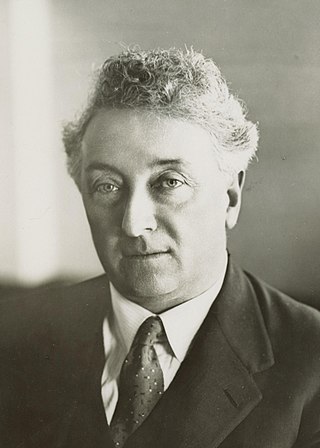
Joseph Aloysius Lyons was an Australian politician who was the 10th Prime Minister of Australia, in office from 1932 until his death in 1939. He began his career in the Australian Labor Party (ALP), but became the founding leader of the United Australia Party (UAP) after the Australian Labor Party split of 1931. He had earlier been Premier of Tasmania from 1923 to 1928.
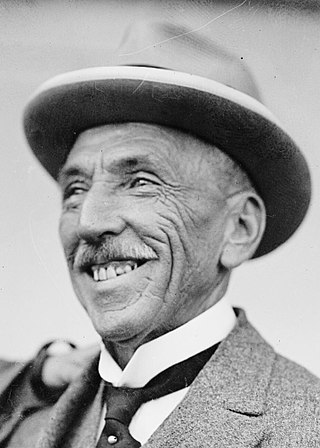
William Morris Hughes was an Australian politician who served as the seventh prime minister of Australia from 1915 to 1923. He is best known for leading the country during World War I, but his influence on national politics spanned several decades. Hughes was a member of federal parliament from Federation in 1901 until his death in 1952, the only person to have served for more than 50 years. He represented six political parties during his career, leading five, outlasting four, and being expelled from three.
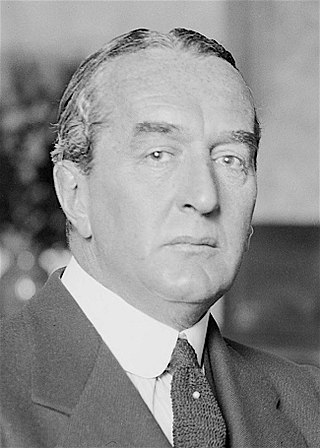
Stanley Melbourne Bruce, 1st Viscount Bruce of Melbourne, was an Australian politician, statesman and businessman who served as the eighth prime minister of Australia, from 1923 to 1929, holding office as the leader of the Nationalist Party. He previously served as the treasurer of Australia from 1921 to 1923.

The United States Shipping Board (USSB) was established as an emergency agency by the 1916 Shipping Act, on September 7, 1916. The United States Shipping Board's task was to increase the number of US ships supporting the World War I efforts. The program ended on March 2, 1934.

The Union-Castle Line was a British shipping line that operated a fleet of passenger liners and cargo ships between Europe and Africa from 1900 to 1977. It was formed from the merger of the Union Line and Castle Shipping Line.
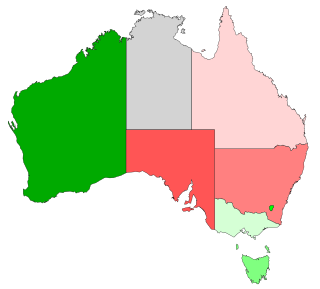
The 1916 Australian referendum on compulsory military service was held on 28 October 1916. It was the first non-binding Australian referendum, and contained one question. This referendum was held due to Prime Minister Billy Hughes' desire to conscript young Australian men for overseas service during World War I. It was conducted under the Military Service Referendum Act 1916.

Sir George Foster Pearce KCVO was an Australian politician who served as a Senator for Western Australia from 1901 to 1938. He began his career in the Labor Party but later joined the National Labor Party, the Nationalist Party, and the United Australia Party; he served as a cabinet minister under prime ministers from all four parties.

The Australian Party was a political party founded and led by Billy Hughes after his expulsion from the Nationalist Party. The party was formed in 1929, and at its peak had four members of federal parliament. It was merged into the new United Australia Party in 1931, having never contested a federal election.

SS Akaroa was a UK steam ocean liner and refrigerated cargo ship. She was launched in 1914 in Ireland as Euripides for Aberdeen Line. When new, she was the largest ship in the Aberdeen Line fleet.

The Clan Line was a passenger and cargo shipping company that operated in one incarnation or another from the late nineteenth century and into the twentieth century.
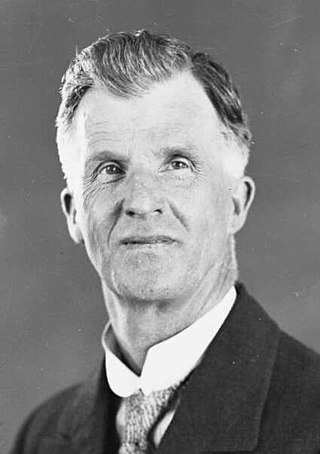
The 1929 Australian federal election was held in Australia on 12 October 1929. All 75 seats in the House of Representatives were up for election, but there was no Senate election. The election was caused by the defeat of the Stanley Bruce-Earle Page Government in the House of Representatives over the Maritime Industries Bill, Bruce having declared that the vote on the bill would constitute a vote of confidence in his government.

The 1919 Australian federal election was held on 13 December 1919 to elect members to the Parliament of Australia. All 75 seats in the House of Representatives and 19 of the 36 seats in the Senate were up for election. The incumbent Nationalist Party government won re-election, with Prime Minister Billy Hughes continuing in office.
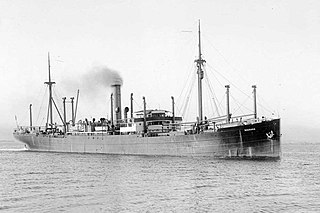
Pfalz was a 6,557-ton cargo steamer operated by German shipping company Norddeutscher Lloyd. The ship became the target of the first shot fired by Australian forces in World War I, soon after departing the Port of Melbourne in Australia.
Commonwealth Oil Refineries (COR) was an Australian oil company that operated between 1920 and 1952 as a joint venture of the Australian government and the Anglo-Persian Oil Company.
During the second half of World War I, the First Australian Imperial Force experienced a shortage of men as the number of men volunteering to fight overseas declined and the casualty rate increased. At the time, military service within the Commonwealth of Australia and its territories was compulsory for Australian men, but that requirement did not extend to conflict outside of Australia. In 1916, Prime Minister Billy Hughes called a plebiscite to determine public support for extending conscription to include military service outside the Commonwealth for the duration of the war. The referendum, held on 28 October 1916, narrowly rejected the proposal. A second plebiscite, held a year later on 20 December 1917, also failed to gain a majority.

Port Line was a passenger and cargo shipping company, initially formed as the Commonwealth and Dominion Line in 1914, and in operation in one form or another until 1982.

SS Themistocles was a UK steam ocean liner and refrigerated cargo ship. She was launched in 1910 in Ireland and scrapped in 1947 in Scotland. She was built for Aberdeen Line, White Star Line managed her for a few years, and she spent the latter part of her career with Shaw, Savill & Albion Line.

Eastern Steamship Lines was a shipping company in the United States that operated from 1901 to 1955. It was created through successive mergers by Wall Street financier and speculator Charles W. Morse. The line sailed along the eastern seaboard of the United States and Canada, operating out of Boston and New York. Much of its fleet was sold Boston to the US government for use in World War I. After the war the company would order additional ships for the Post-war period. Eastern Steamship Lines served as operator for the War Shipping Administration in World War II. The United States government requisitioned all of the fleets vessels for military duty on both the Atlantic and Pacific.

SS Demosthenes was a UK steam ocean liner and refrigerated cargo ship. She was launched in 1911 in Ireland for Aberdeen Line and scrapped in 1931 in England. In the First World War she was an Allied troop ship.
References
- ↑ Fitzhardinge, Laurence (1979). William Morris Hughes: A Political Biography / Vol. 2: The Little Digger, 1914–1952. Angus & Robertson. pp. 137–144. ISBN 0207132453.
- 1 2 "Commonwealth Line". www.theshipslist.com. Retrieved 29 May 2023.
- ↑ Fitzhardinge, pp. 500–501
- ↑ McDonell, R. (Ralph) (1976), Build a fleet, lose a fleet, Hawthorn Press, ISBN 978-0-7256-0165-2
- ↑ Brennan, Frank (1978), The Australian Commonwealth Shipping Line, Roebuck Society, ISBN 978-0-909434-11-3
- ↑ AUSTRALIAN COMMONWEALTH GOVERNMENT LINE of STEAMERS, Flotilla Australia.
- ↑ Fitzhardinge, pp. 556–557